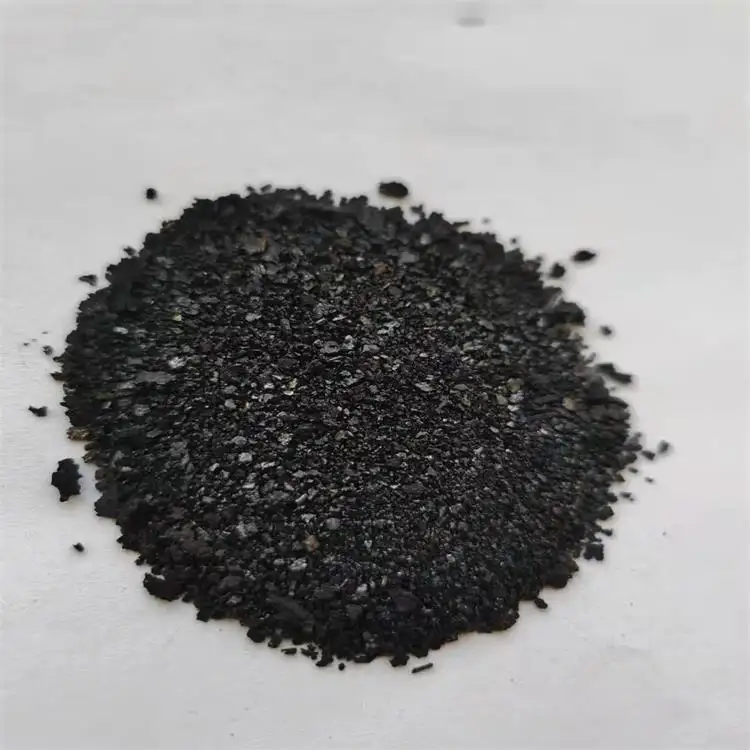Natural Indigo Pigment for OEM Applications in Textile and Art Industries
The World of OEM Natural Indigo Pigment A Sustainable Approach to Coloration
In today’s world, where sustainability meets creativity, natural pigments are gaining significant traction across various industries. Among these, OEM (Original Equipment Manufacturer) natural indigo pigment stands out for its unique properties and historical significance. As a vibrant and enduring dye, indigo has been cherished for centuries, and its revival in contemporary applications reflects a growing trend towards eco-friendly manufacturing processes.
Historical Background of Indigo
Indigo has a deep-rooted history, traceable to ancient civilizations. It was one of the first dyes used by humankind, with its origins believed to date back over 6,000 years in cultures such as the Indus Valley and ancient Egypt. Traditionally derived from the leaves of the Indigofera plant, the dye obtained its name from the Latin term indicum, meaning from India. The rich blue hues ushered in significant trade, particularly in Europe between the 16th and 19th centuries, eventually influencing fashion and culture.
The Process of Producing Natural Indigo
The production of natural indigo pigment involves an intricate process. Farmers cultivate indigo plants, primarily Indigofera tinctoria or Indigofera suffruticosa. After harvesting, the leaves undergo a fermentation process, wherein the indican compound is converted into indigo dye. Once the dye precipitates, it is carefully dried and processed into a fine pigment. This process not only preserves the natural characteristics of indigo but also eliminates the harmful synthetic chemicals associated with artificial dyes, promoting an environmentally friendly approach to coloration.
Benefits of OEM Natural Indigo Pigment
OEM natural indigo pigment presents numerous advantages that cater to both manufacturers and consumers. Its most notable feature is its biocompatibility, making it suitable for various applications, including textiles, cosmetics, and food. The pigment's natural origin minimizes the risk of allergic reactions, a common issue with synthetic dyes.
oem natural indigo pigment

Moreover, natural indigo is renowned for its excellent lightfastness and washfastness. Fabrics dyed with indigo retain their vibrant color even after multiple washes, which is essential for the fashion and textile industries. This durability aids in reducing waste and promotes sustainability, as consumers are more likely to keep garments longer when they maintain their appearance.
The Role of OEM Manufacturers in Sustainability
OEM manufacturers play a crucial role in advancing the use of natural indigo pigment. By sourcing, producing, and distributing natural pigments, they help brand owners create eco-conscious products that appeal to the growing base of environmentally aware consumers. Many companies are now seeking partnerships with OEM providers that specialize in natural dyes, ensuring that their products align with sustainability goals.
Additionally, the demand for transparent supply chains and ethical sourcing practices is prompting OEM manufacturers to innovate. They are increasingly adopting methods that not only reduce ecological footprints but also support the livelihoods of farmers and communities involved in the cultivation of indigo. Fair trade and direct sourcing practices contribute to the socio-economic stability of these communities, turning natural indigo into a symbol of both environmental and social responsibility.
Future of Natural Indigo in Industry
As the world embraces sustainability, the future of OEM natural indigo pigment looks promising. Its applications are broadening, with innovative uses in eco-friendly packaging, bioplastics, and even in the food industry as a natural colorant. The consistent interest in natural dyes in fashion, particularly in the realm of slow fashion and artisanal craftsmanship, indicates a shift towards more responsible consumer choices.
In conclusion, OEM natural indigo pigment not only adds a rich, historical hue to products but also represents a forward-thinking approach to sustainability in manufacturing. As consumers become increasingly aware of environmental issues, the adoption of natural pigments like indigo will undoubtedly grow, leading to a more sustainable and colorful future.
-
The Timeless Art of Denim Indigo Dye
NewsJul.01,2025
-
The Rise of Sulfur Dyed Denim
NewsJul.01,2025
-
The Rich Revival of the Best Indigo Dye
NewsJul.01,2025
-
The Enduring Strength of Sulphur Black
NewsJul.01,2025
-
The Ancient Art of Chinese Indigo Dye
NewsJul.01,2025
-
Industry Power of Indigo
NewsJul.01,2025
-
Black Sulfur is Leading the Next Wave
NewsJul.01,2025

Sulphur Black
1.Name: sulphur black; Sulfur Black; Sulphur Black 1;
2.Structure formula:
3.Molecule formula: C6H4N2O5
4.CAS No.: 1326-82-5
5.HS code: 32041911
6.Product specification:Appearance:black phosphorus flakes; black liquid

Bromo Indigo; Vat Bromo-Indigo; C.I.Vat Blue 5
1.Name: Bromo indigo; Vat bromo-indigo; C.I.Vat blue 5;
2.Structure formula:
3.Molecule formula: C16H6Br4N2O2
4.CAS No.: 2475-31-2
5.HS code: 3204151000 6.Major usage and instruction: Be mainly used to dye cotton fabrics.

Indigo Blue Vat Blue
1.Name: indigo blue,vat blue 1,
2.Structure formula:
3.Molecule formula: C16H10N2O2
4.. CAS No.: 482-89-3
5.Molecule weight: 262.62
6.HS code: 3204151000
7.Major usage and instruction: Be mainly used to dye cotton fabrics.

